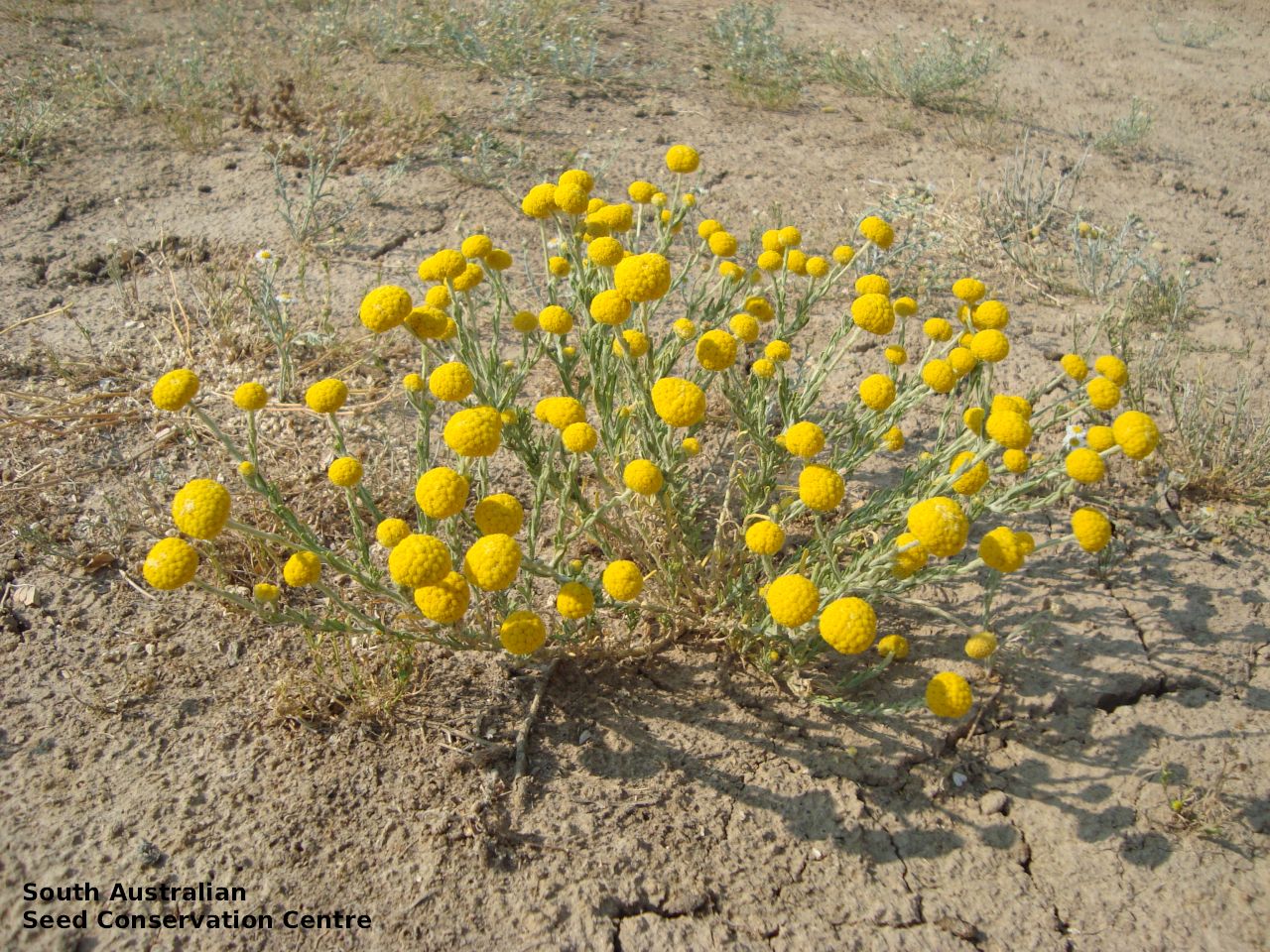
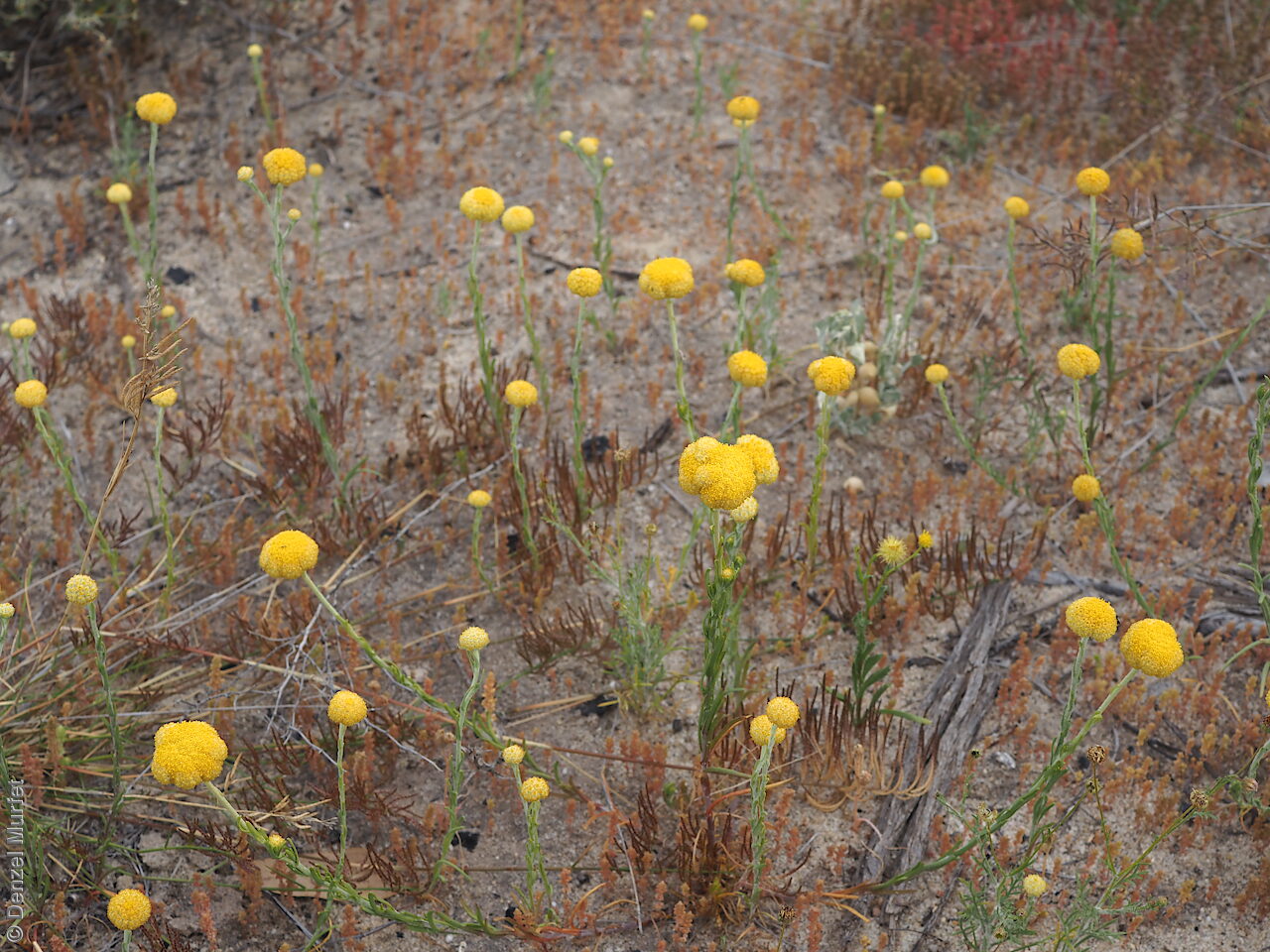
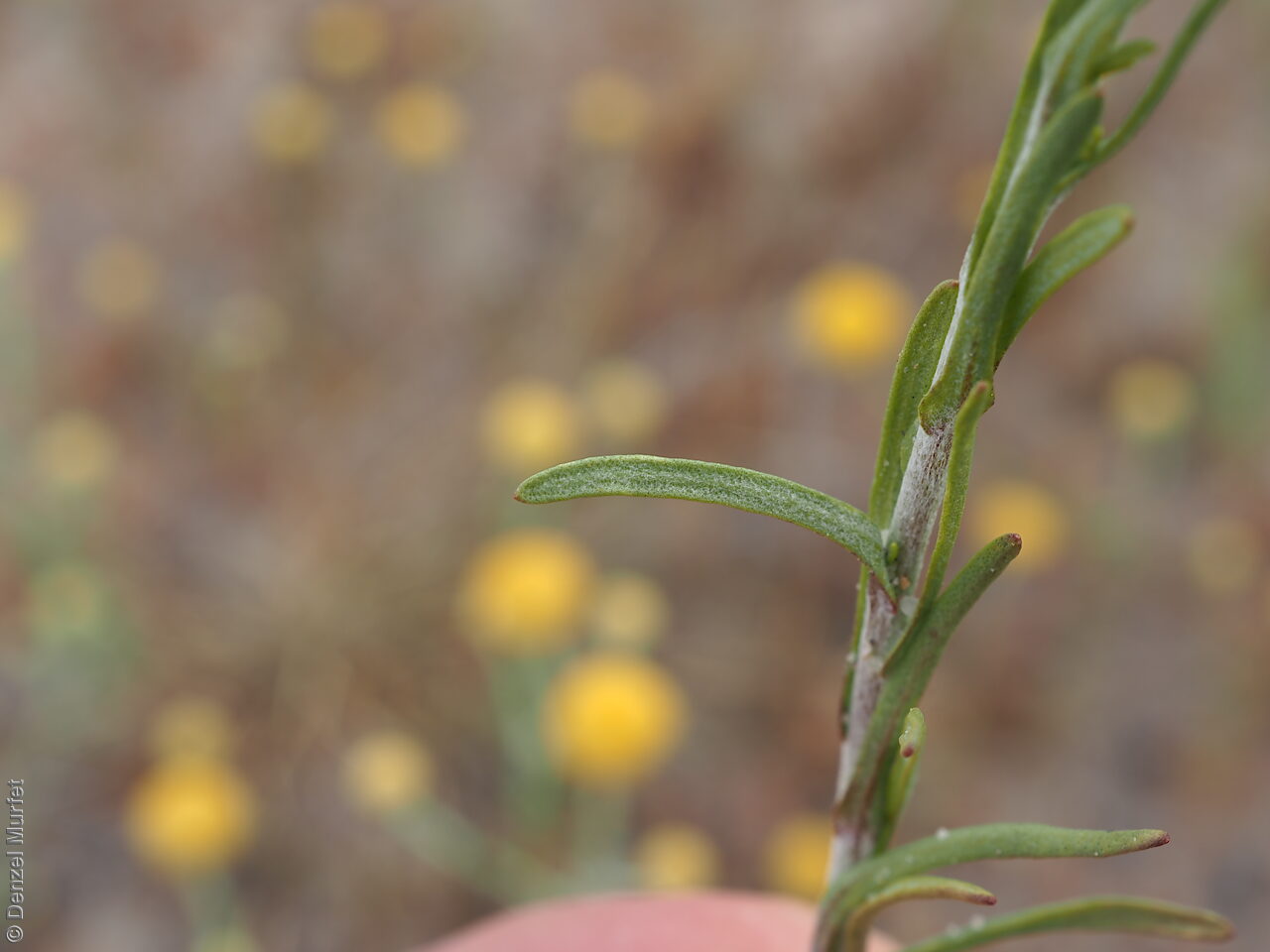
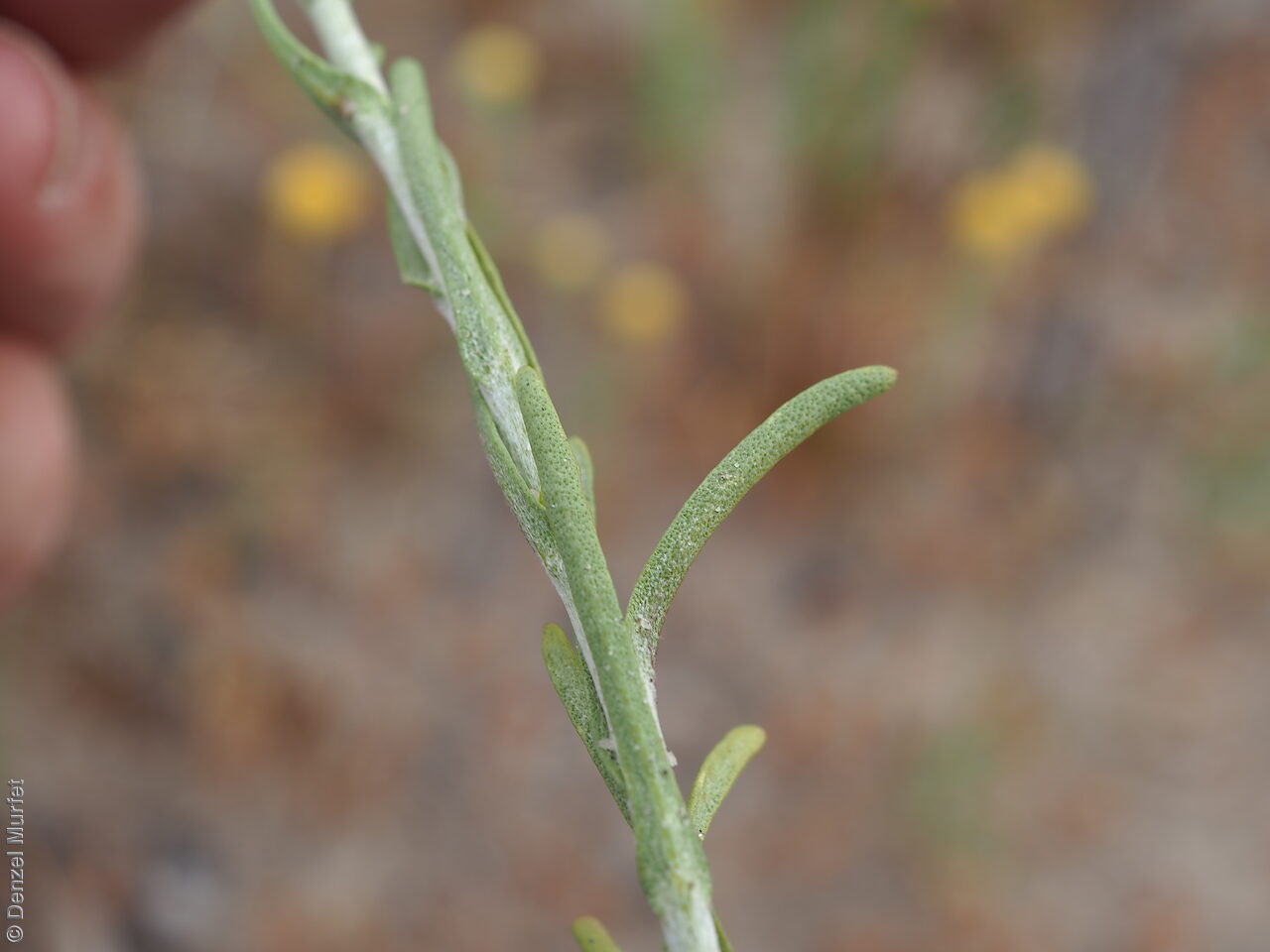
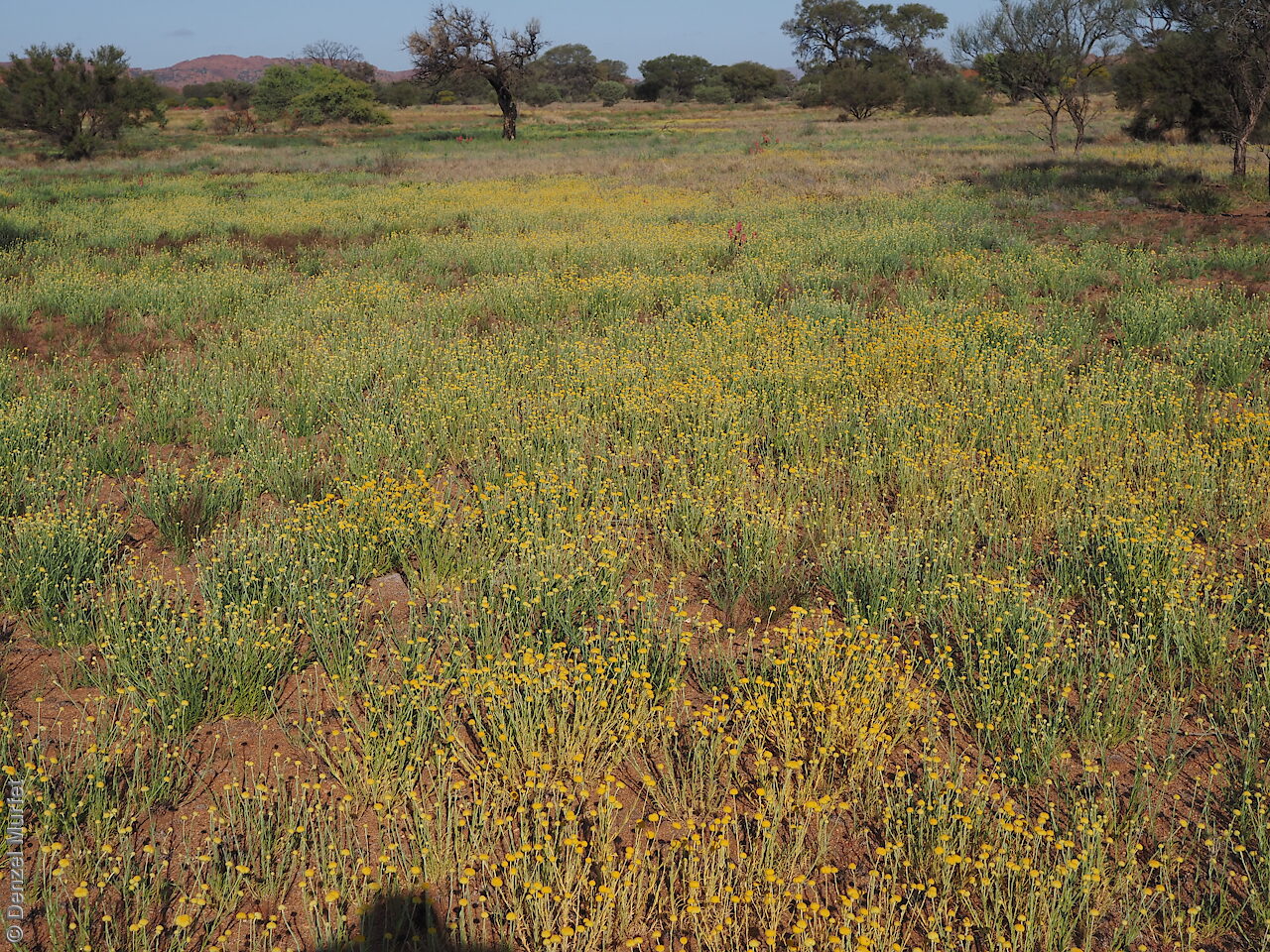
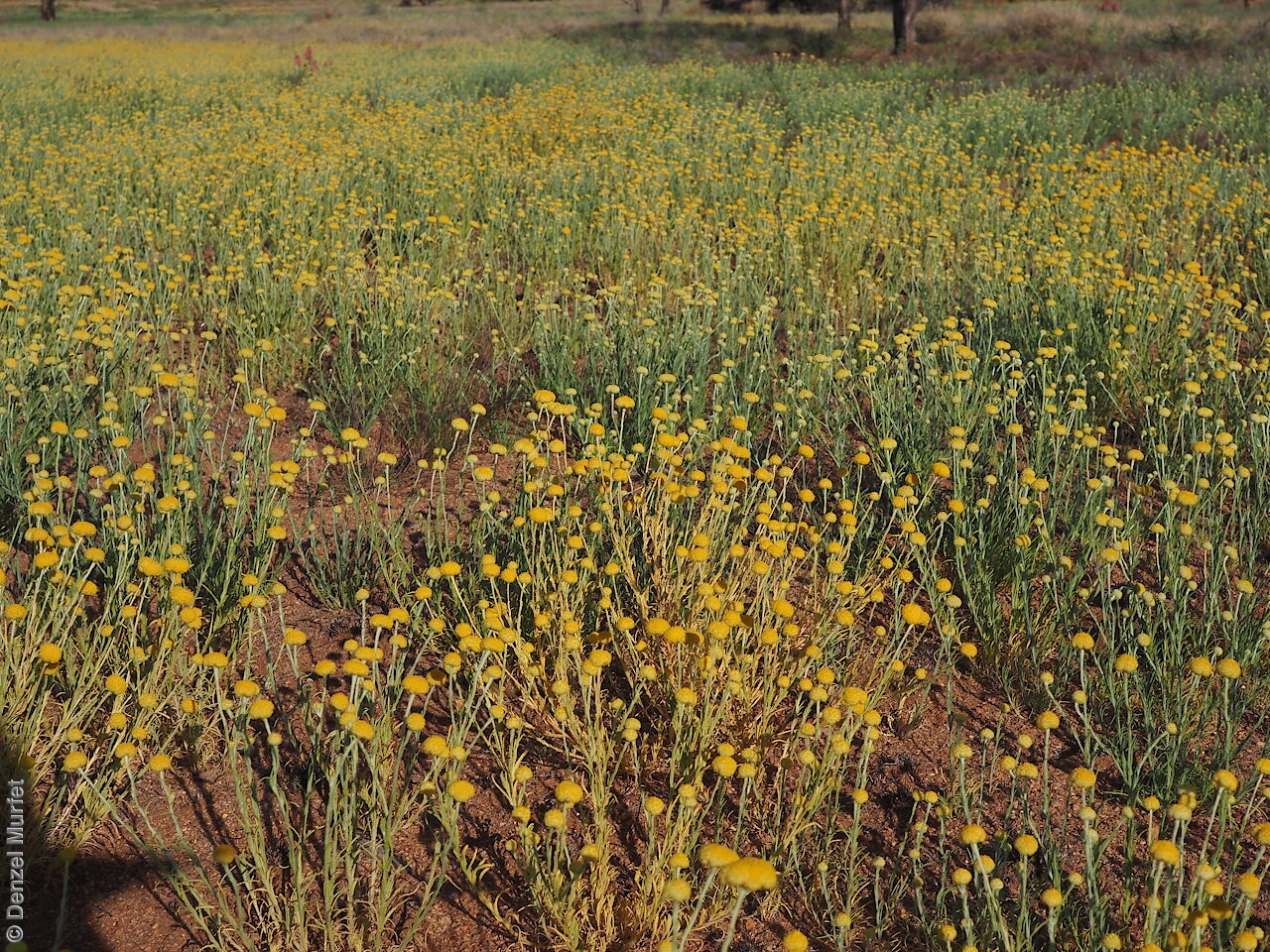
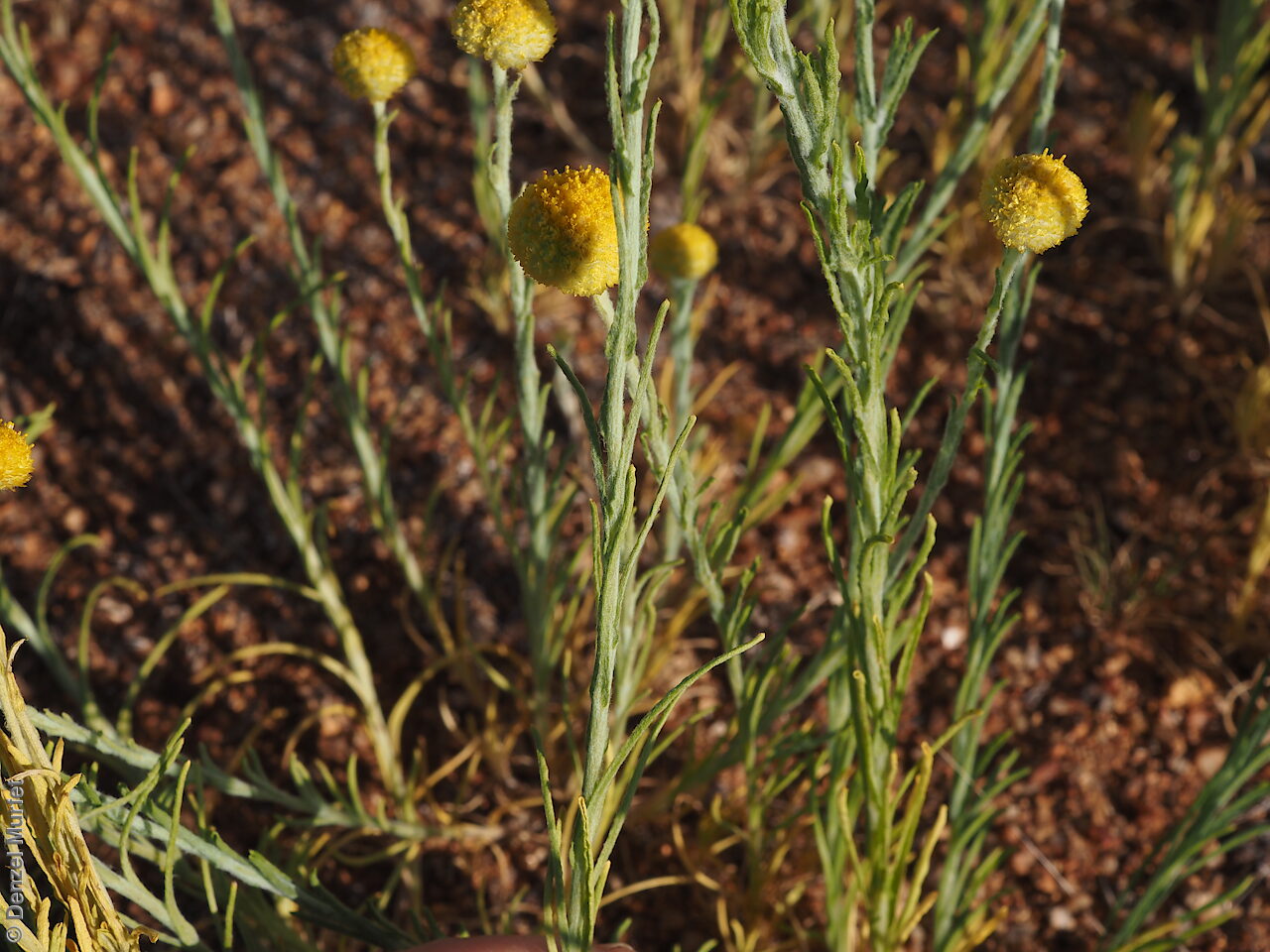
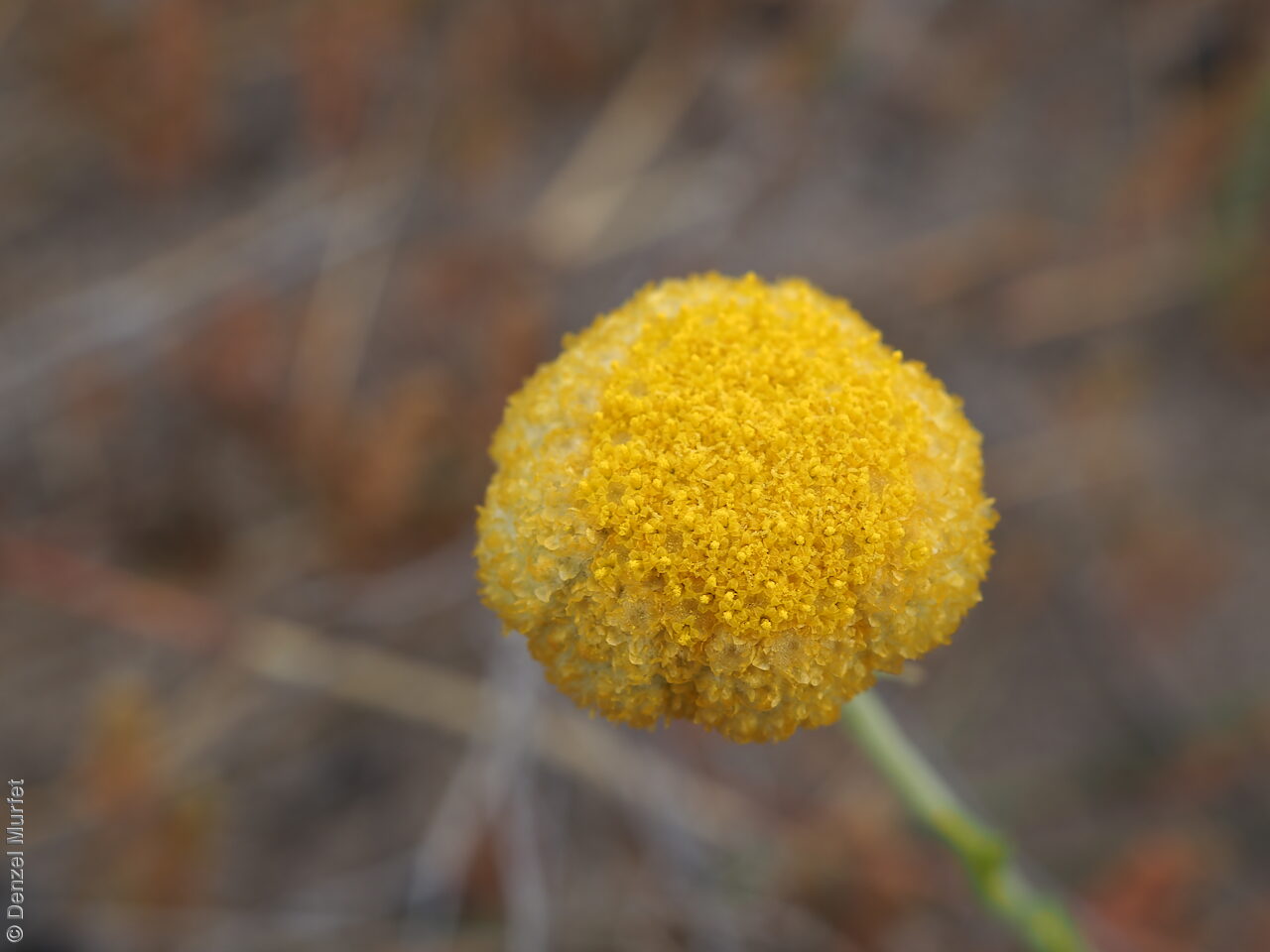
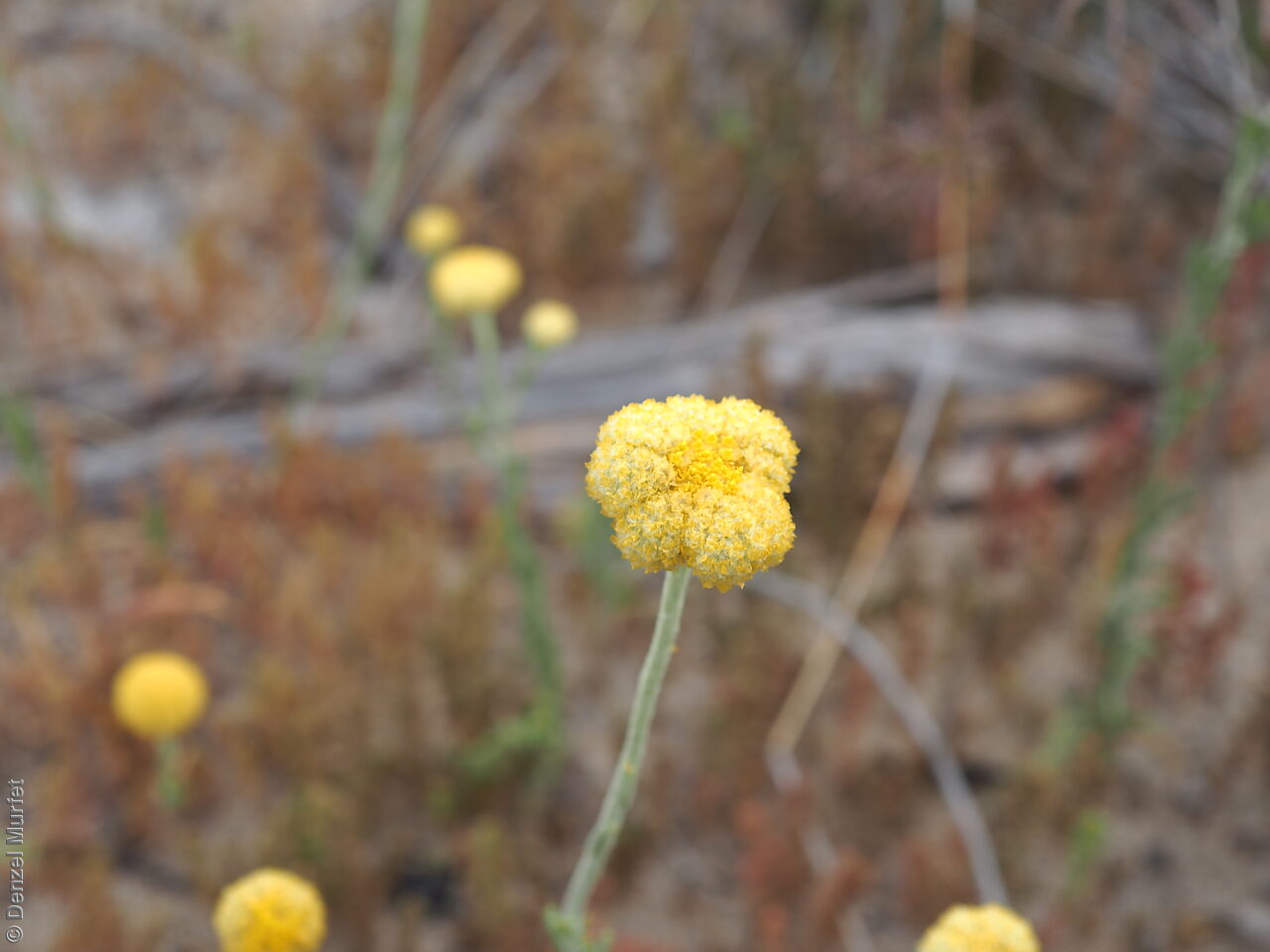
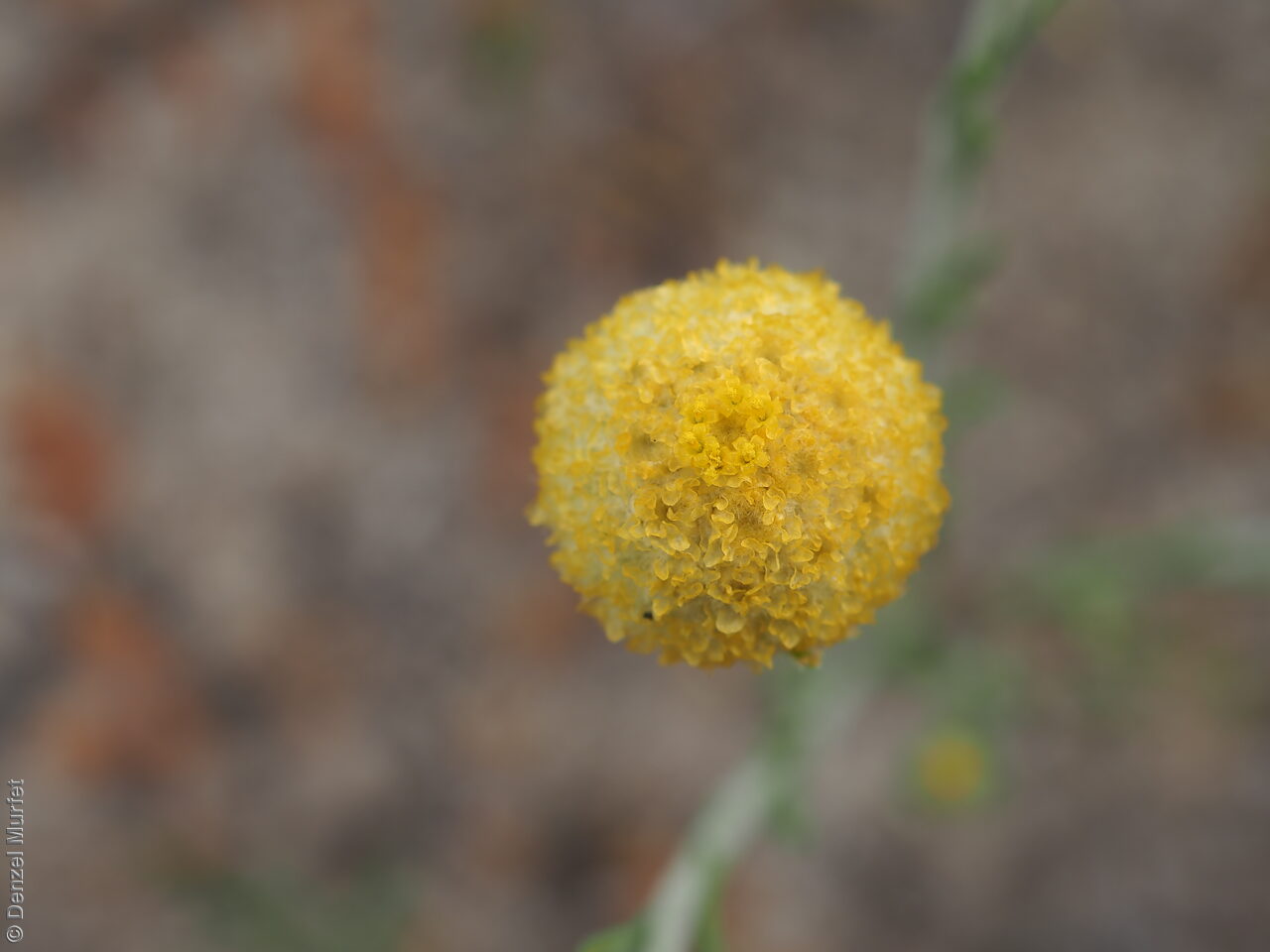
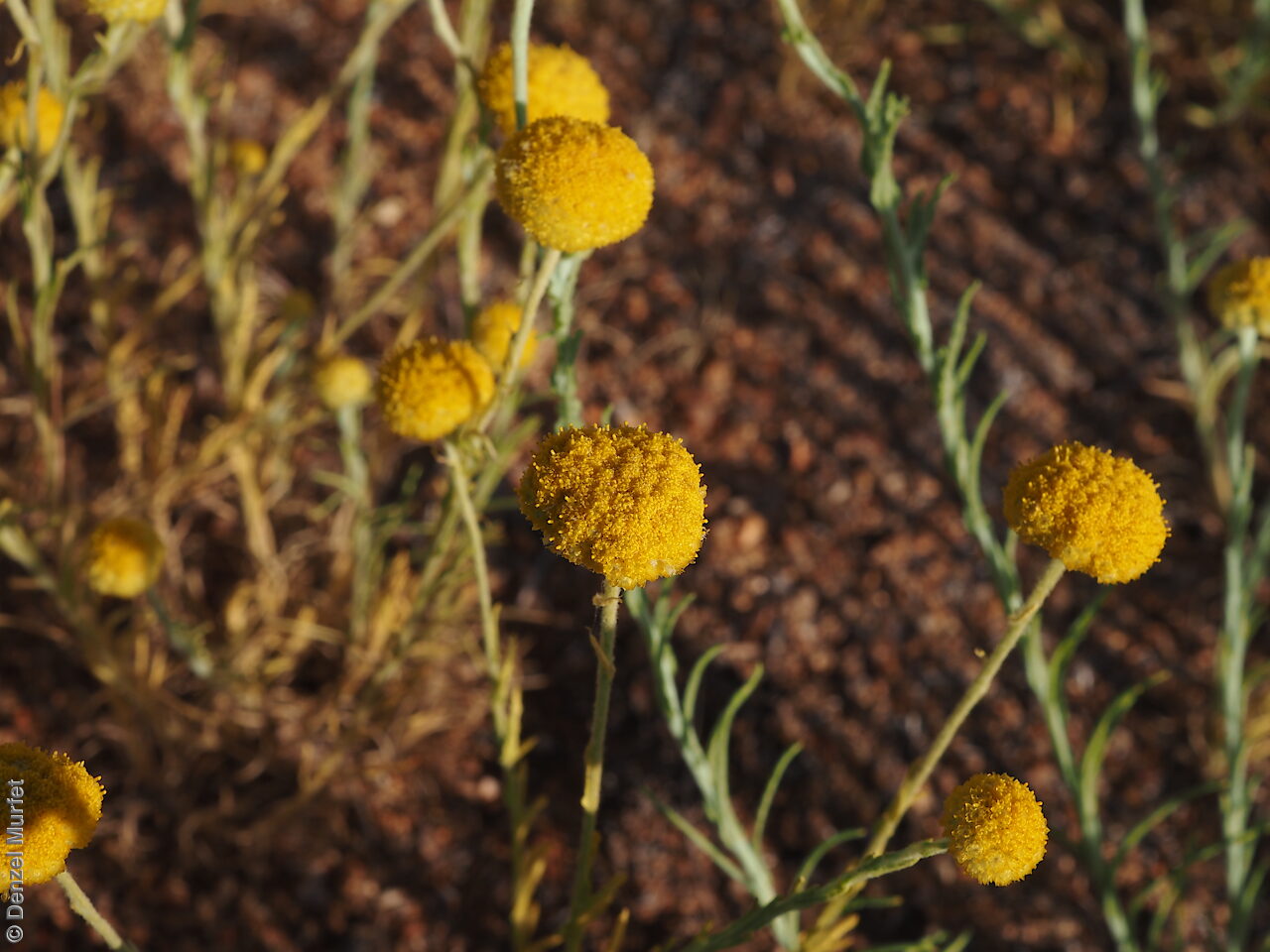
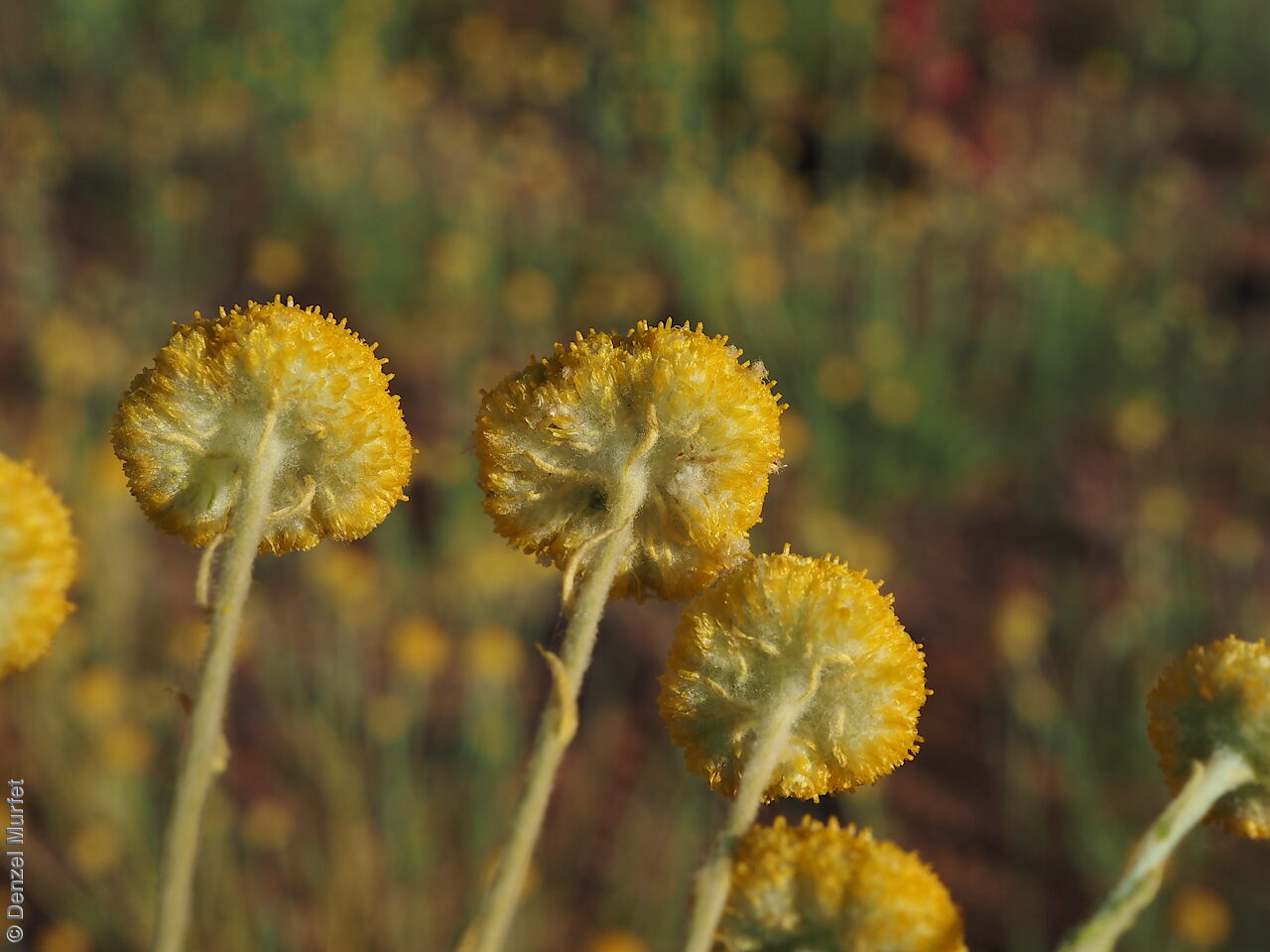
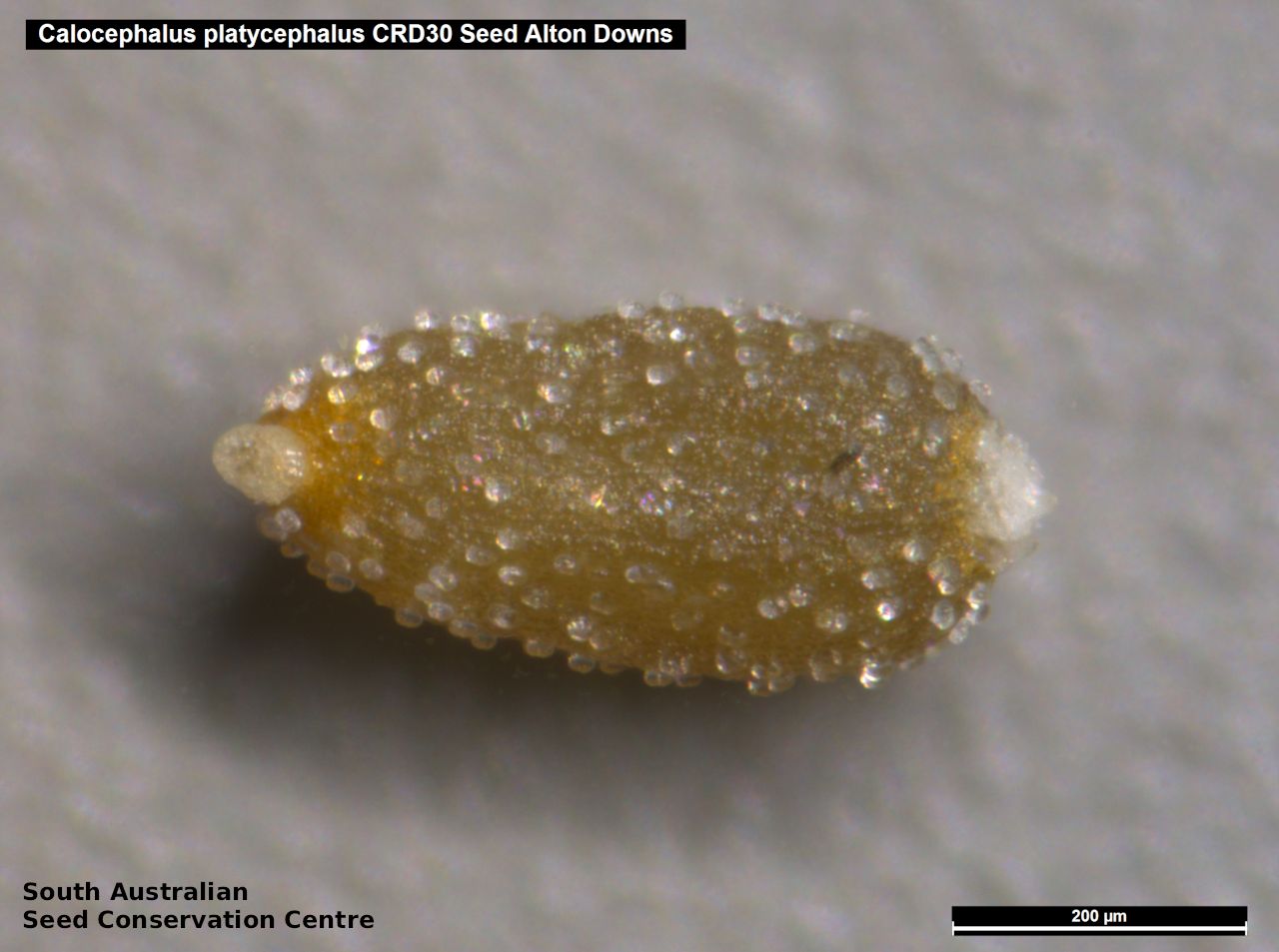
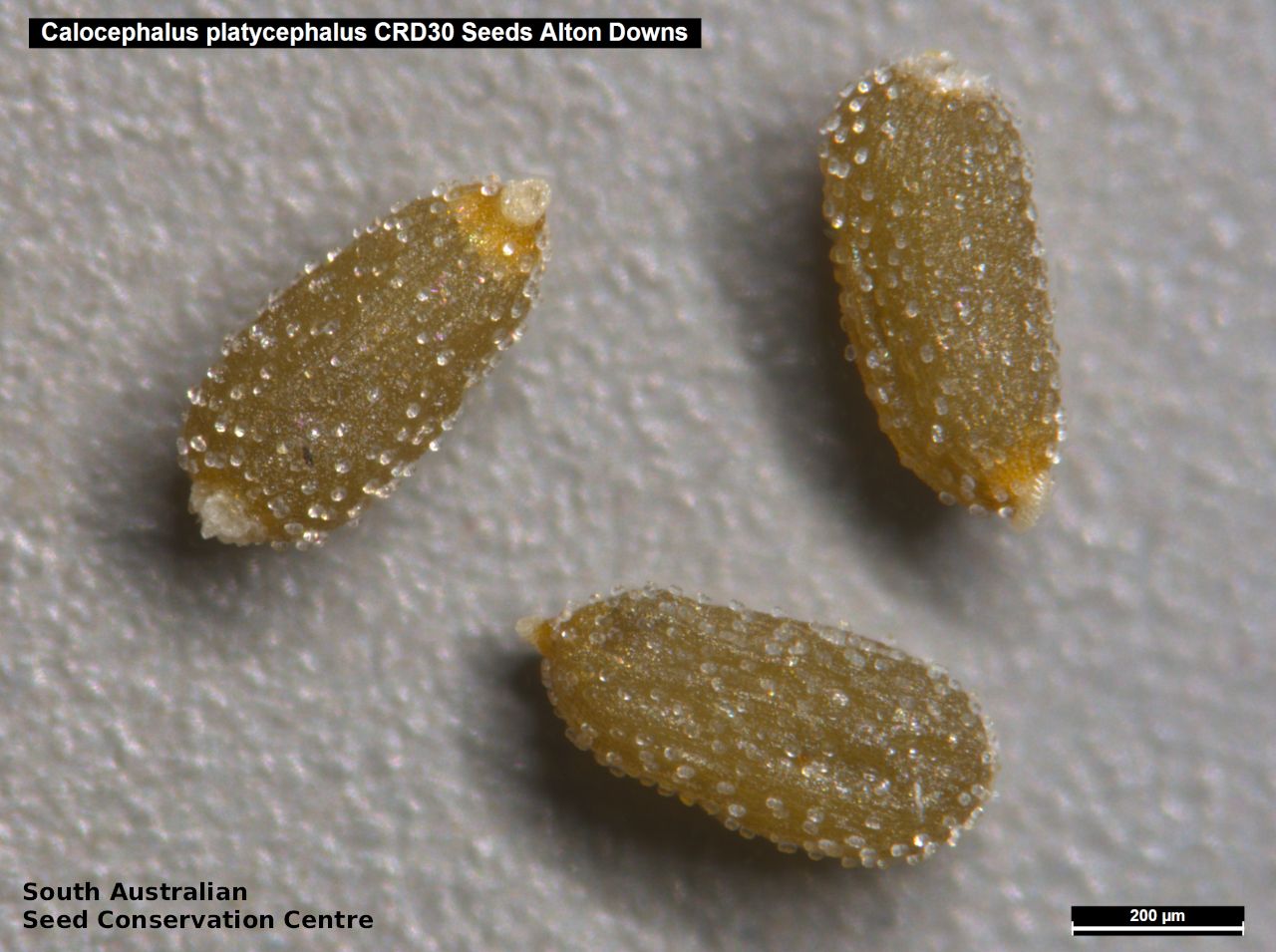

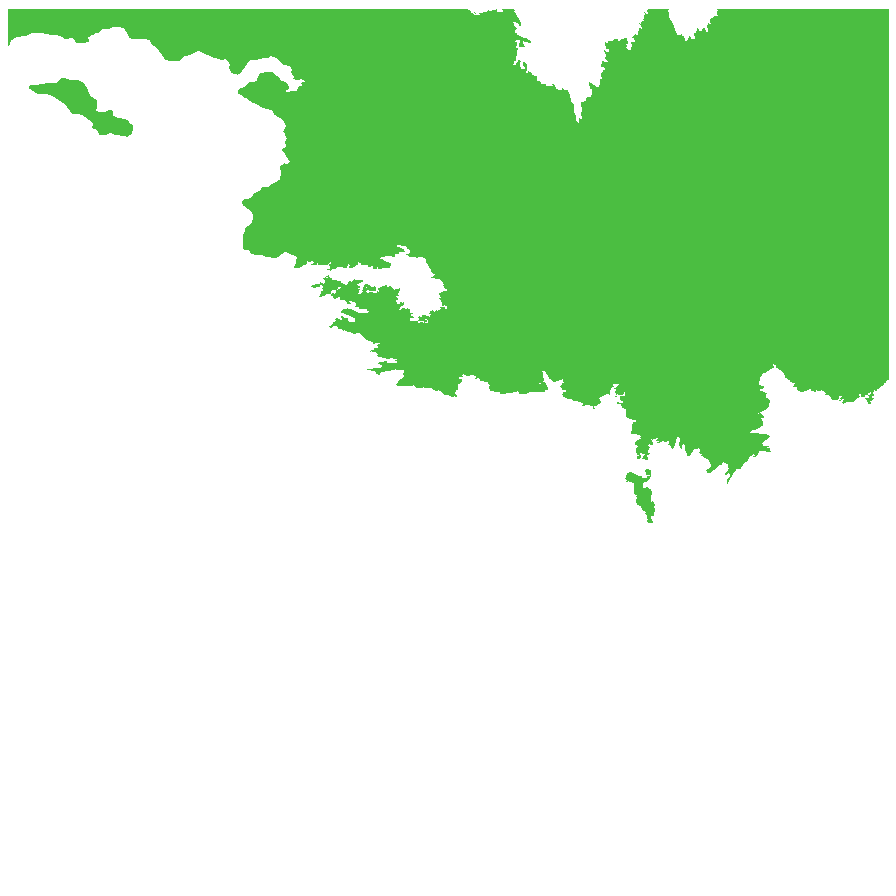
Botanical art
Prior names
Pachysurus platycephalus
Calocephalus multiflorus, partly
Common names
Flattened Beauty-heads
Western Beauty-heads
Etymology
Calocephalus from the Greek 'kalos' meaning beautiful and 'kephale' meaning a head; referring to the colourful compound heads. Platycephalus from the Greek 'platys' meaning broad and 'kephale' meaning head; referring to the species flatten flower heads.
Distribution and status
Found in the northern part in South Australia growing on sandy soil often in semi-saline areas. Also found in Western Australia, Northern Territory, Queensland and New South Wales. Native. Common in South Australia. Uncommon in Western Australia and New South Wales. Common in the other states.
Herbarium regions: North Western, Lake Eyre, Gairdner-Torrens, Flinders Ranges, Eastern
AVH map: SA distribution map (external link)
Plant description
Annual herb with erect to ascending branches to 45 cm high with white-woolly hairs. Leaves alternate, linear to lanceolate, to 30 mm long and 2 mm wide, glabrous to hairy, apex blunt to sometimes pointy in upper leaves. Daisy head pale yellow, broadly depressed to depressed-ovoid or globular to 3 cm diameter. Flowers throughout the year but mainly in spring. Fruits are dense round pale yellow head. Seeds are three-sided pale brown seed to 0.8 mm long and 0.4 mm wide with a tubercule surface. Seed embryo type is spatulate.
Seed collection and propagation
Collect seeds between September and November. Collect heads that are matured, pale yellow, a bit spongy and contain brown seeds. Place the heads in a tray for one to two week to dry. Then rub the heads gently with your hands to dislodge the seeds. Use a sieve to separate any unwanted material. Be careful as the seeds are very small. Store the seeds with a desiccant such as dried silica beads or dry rice, in an air tight container in a cool and dry place. Seeds are non-dormant, viable seed should germinate readily.